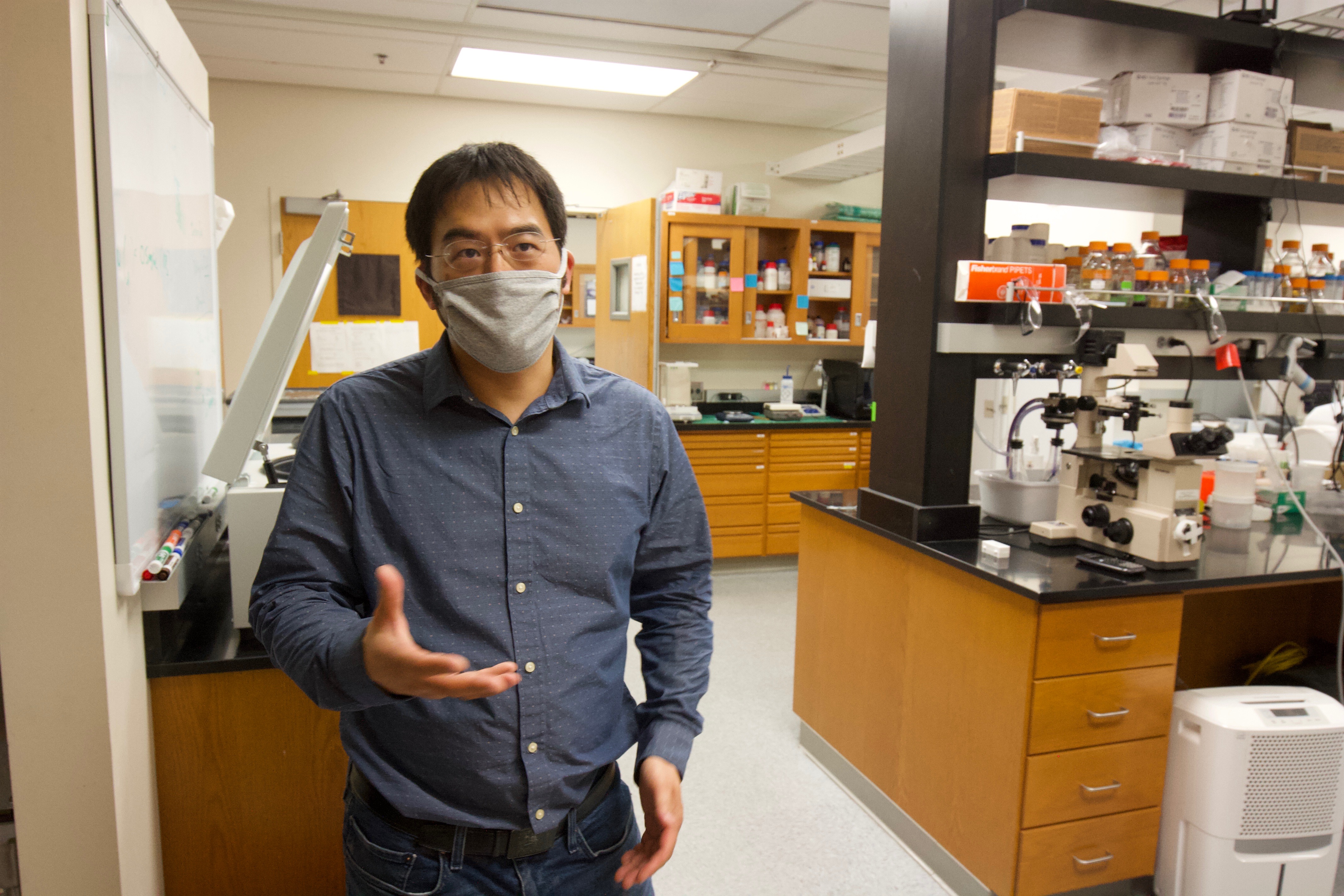Bacteria self-quarantine, too, and this ability is helping UCI researchers develop a treatment for coronavirus

Albert Siryaporn stands in his lab, face mask donned, talking about how long it might take for his lab’s research to evolve into a viable coronavirus treatment — and how teaching classes online instead of in person is affecting that. “It’s a time issue,” Siryaporn says. “Moving classes online has created a lot of labor.”
Professor Albert Siryaporn couldn’t have known it, but research he and a team of scientists published last year in December would, just a few months later, position him and his lab to combat the raging coronavirus pandemic.
The research, published in the Journal of Bacteriology, highlighted a molecule emitted by virus-infected bacteria that functions as a siren: it warns noninfected bacteria to steer clear, lest they become infected as well. The process surrounding the siren mechanism, Siryaporn later realized, could one day lead to a treatment for the novel coronavirus.
“Bacteria are constantly under attack by viruses,” Siryaporn says, who’s a biophysicist in the UCI Department of Physics & Astronomy. “We discovered that this molecule was responsible for this effect, this kind of warning signal.”
The name of the bacteria the team studied is Pseudomonas aeruginosa, and it can live almost everywhere: in the soil, on the bottom of your shoe and even on your skin. The molecule Pseudomonas emits after a virus infects it stimulates the production of “decoy” bacteria — empty Pseudomonas “husk” vesicles that viruses will attack instead of attacking Pseudomonas.
Siryaporn’s team is working to see whether or not they can “harvest” the bacteria’s decoy ability and retool it as a treatment for coronavirus. The idea, Siryaporn explains, is that if coronavirus attacks the decoys instead, this could render the virus particles inert.
“If they could bind somewhere else, you could deactivate the virus,” Siryaporn says. “It may allow the body to digest them.”
For their December study, the team experimented with colonies of Pseudomonas, and they filmed what happened. At the start of the team’s videos, colonies of Pseudomonas grow out from the center of a petri dish, and they continue to grow out into branches. The bacteria look like they’re going to fill the dishes — but then they don’t. There are obvious dots in the dishes that the branches all avoid, and the branches grow around them like they’re avoiding the plague.
Which, in a way, is what the bacteria are doing. The dots that the bacteria are avoiding are colonies of Pseudomonas that Siryaporn deliberately infected with a virus, and these bacteria are emitting the siren molecule and also making the decoy husks.
Siryaporn likens the response of the infected bacteria to what happens if you throw a rock at a swarm of bees. “If you throw a rock at a swarm of bees, they release a pheromone,” Siryaporn says. The pheromone tells the rest of the swarm that something is amiss, and the swarm enters an alarmed state.
This is a “collective stress response,” Siryaporn says, and the husk-making bacteria in the petri dishes are doing something analogous. “These vesicles are really good at allowing the bacteria to survive,” he says. “We’re using our knowledge of how these vesicles are made, and we’re going to apply that to creating a new strategy that would combat coronavirus.”
Pseudomonas, it seems, self-quarantines in the same way that humans around the globe are doing. Now, we just need to learn how to make decoys of ourselves like Pseudomonas does.
